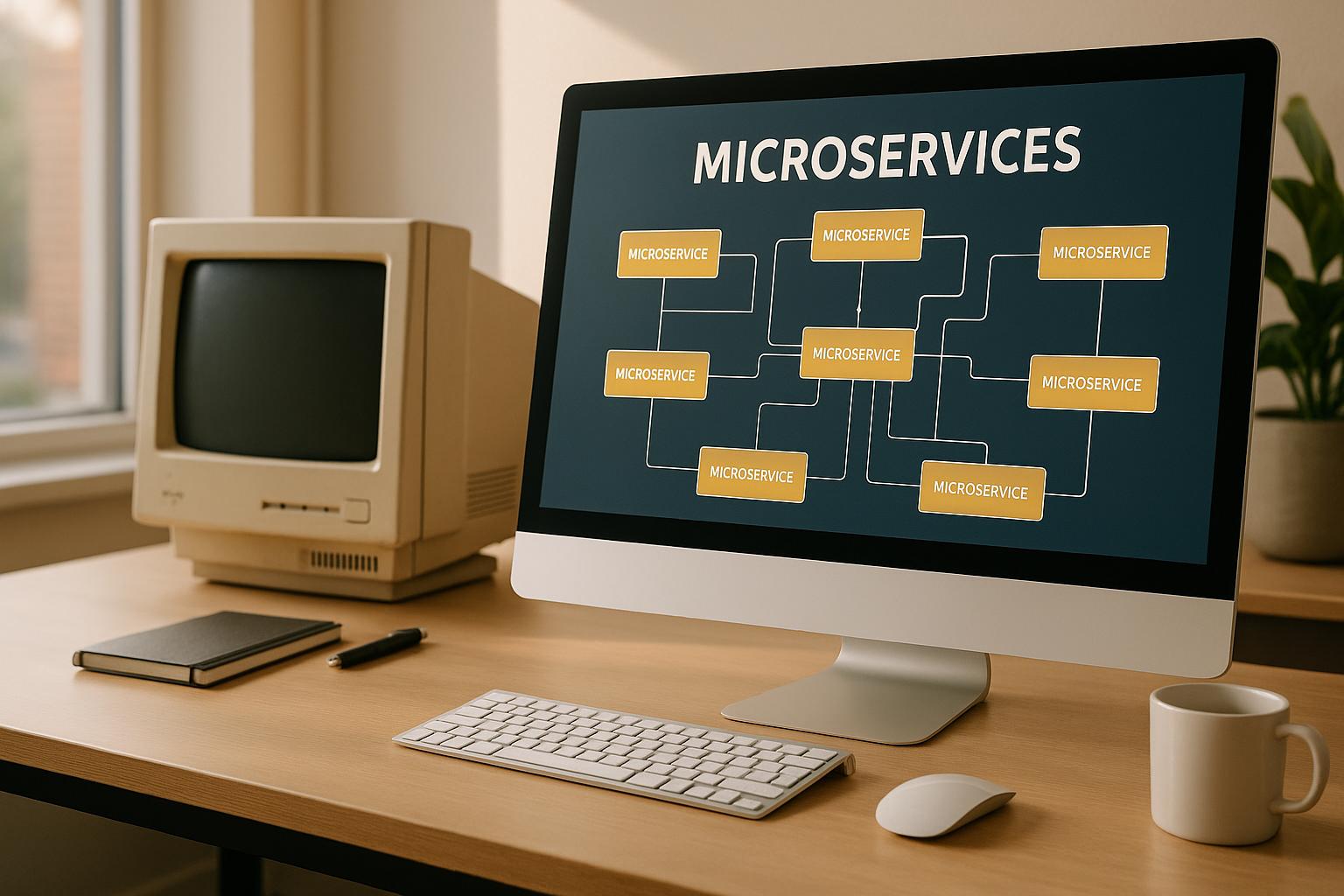Shift planning is a critical part of running successful B2B operations in the U.S., but it comes with challenges like last-minute changes, poor coverage, and compliance issues. These problems can lead to higher costs, employee burnout, and legal risks.
Here’s how to fix them:
- Plan Ahead: Create schedules 3–4 weeks in advance to reduce conflicts and improve work-life balance.
- Use Technology: Workforce management tools like Connecteam or Deputy automate tasks, track compliance, and handle last-minute changes.
- Focus on Employee Preferences: Align schedules with employee needs to boost morale and reduce absenteeism.
- Stay Compliant: Keep up with labor laws to avoid fines.
- Improve Communication: Use real-time systems to ensure everyone stays informed about changes.
The right tools and strategies can transform shift planning into a smoother, more efficient process.
Best Tool for Employee Scheduling & Management @ConnecteamApp @philpallen
Common Shift Planning Problems
Shift planning can be a headache for U.S. B2B organizations, often disrupting operations and cutting into profits. Identifying these challenges is the first step toward creating a more reliable scheduling system.
Last-Minute Changes and Absenteeism
When employees call in sick or need emergency time off, it throws a wrench into carefully planned schedules. Managers scramble to fill gaps, often relying on overtime, pulling staff from other teams, or leaving shifts understaffed. These quick fixes might work short-term, but they come at a cost - higher expenses, employee burnout, and, in some cases, unhappy customers.
For industries like manufacturing, healthcare, or customer service, where operations run around the clock, these disruptions can be especially damaging. Team members covering for absent colleagues may face fatigue, which can lead to slower response times and a dip in service quality.
But absenteeism isn’t the only issue. Staffing imbalances, whether too many or too few employees, create their own set of problems.
Poor Coverage and Scheduling Conflicts
Overstaffing means paying for labor you don’t need, while understaffing leaves employees overwhelmed and customers underserved. Neither scenario is ideal.
Scheduling conflicts are another frequent issue. Overlapping time-off requests or unclear shift boundaries can result in double-booked slots or unnoticed gaps in coverage. These problems tend to spike during busy seasons or when managing shifts across multiple time zones or regions.
Inconsistent schedules only add to the strain, often leading to employee burnout, which brings its own challenges.
Employee Burnout and Turnover
Erratic shifts and excessive overtime can wear employees down. When work schedules disrupt personal lives, productivity takes a hit, and turnover rates climb.
Losing experienced staff creates a ripple effect. Remaining employees have to pick up the slack while new hires are trained, which can drag down team morale and efficiency. Plus, when seasoned workers leave, they take valuable knowledge and experience with them - something that’s hard to replace quickly.
U.S. Labor Law and Overtime Compliance Issues
Navigating federal and state labor laws is no small task. Missteps like failing to track hours accurately, misclassifying employees, or miscalculating overtime can lead to hefty fines and legal battles.
Some states have predictive scheduling laws, requiring employers to give advance notice of work schedules or handle last-minute changes in specific ways. On top of that, meal and break requirements vary widely across states. For companies operating in multiple states, keeping up with these differences is a constant challenge.
Communication Breakdowns
Good communication is the backbone of effective shift planning, but it’s often where things fall apart. Relying on bulletin boards, emails, or phone calls in fast-paced settings can result in missed or delayed updates.
Without a centralized, real-time system, minor issues - like a delayed shift handoff or unexpected absence - can snowball into bigger problems. This is especially true for organizations with remote or distributed teams, where keeping everyone on the same page is even more critical.
Addressing these challenges is key to building a more efficient and resilient scheduling process, as the next sections will explore.
Solutions to Fix Shift Planning Problems
Planning shifts effectively can become much easier when you factor in employee preferences. This approach not only simplifies the scheduling process but also enhances the overall dependability of your workforce. A practical strategy to tackle common scheduling issues is combining advance scheduling with insights into what employees need.
Advance Scheduling and Employee Preferences
Creating schedules 3–4 weeks in advance gives employees the chance to plan their personal lives while minimizing last-minute conflicts. Gathering details about their preferences - like preferred work hours, ideal shift lengths, and any constraints - can lead to smoother shift coverage and happier teams.
When work schedules are tailored to fit personal needs, morale improves, and absenteeism tends to drop.
For organizations looking for expert help, the B2B Ecosystem provides a range of resources and consulting services. They offer actionable strategies and tools to make shift planning more efficient and effective.
sbb-itb-01010c0
Tools and Technologies for Shift Planning
Modern shift planning has stepped into the digital age, offering automated solutions to tackle challenges like last-minute changes and compliance headaches. With the right tools, scheduling evolves from a manual, time-intensive task into a seamless, automated process.
Workforce Management Software
For businesses with complex scheduling needs, workforce management platforms are a game-changer. These tools handle repetitive tasks while minimizing errors.
- Connecteam allows employees to access schedules, request time off, and swap shifts through a mobile app. It also tracks labor costs and sends overtime alerts.
- Deputy simplifies compliance by automatically calculating break times based on state labor laws and flagging potential issues before schedules are finalized.
- ZoomShift offers drag-and-drop scheduling for quick adjustments and sends instant notifications for shift updates.
These platforms not only save time but also improve scheduling accuracy and employee satisfaction. Plus, they provide valuable data insights to make staffing decisions smarter.
Data-Driven Planning
Smart scheduling thrives on understanding patterns within your business. Historical data offers insights that help fine-tune staffing levels and allocate resources more effectively.
- Demand forecasting uses factors like sales data, seasonal trends, and external influences to predict staffing needs.
- Employee availability analytics help identify top performers for specific shifts and track absenteeism trends.
- Performance metrics show how staffing impacts outcomes like customer satisfaction and sales per hour.
By analyzing this data, businesses can make informed decisions and prepare for fluctuations, ensuring optimal coverage.
AI-Powered Planning Tools
Artificial intelligence takes shift planning to the next level with predictive and dynamic capabilities. AI can juggle multiple variables at once, balancing business demands with employee preferences.
- Scenario modeling allows businesses to test various scheduling strategies to find the most efficient approach.
- Dynamic optimization adapts schedules in real-time, addressing challenges like sick calls or unexpected demand surges.
- Predictive analytics analyze patterns in employee behavior, business needs, and external factors to flag potential issues before they arise.
AI simplifies complex scheduling challenges by processing constraints across shifts, skills, and availability in seconds. For example, tools from The B2B Ecosystem are designed to identify inefficiencies and suggest improvements, ensuring schedules are both effective and employee-friendly.
These technologies not only save time but also provide the flexibility to adapt quickly, keeping both businesses and employees on track.
Manual vs Automated Shift Planning Comparison
Shift planning needs to match your organization's size, complexity, and growth trajectory. The method you choose can significantly influence both operational efficiency and employee morale.
Manual vs Automated Planning: Pros and Cons
Weighing the benefits and drawbacks of manual and automated scheduling can help determine the best fit for your organization.
| Aspect | Manual Planning | Automated Planning |
|---|---|---|
| Setup Cost | Low initial cost, often using tools like spreadsheets. | Higher upfront expense, with costs varying by vendor and organization size. |
| Time Investment | Requires significant manager involvement to create and adjust schedules. | Saves time after the initial setup, requiring less ongoing effort. |
| Flexibility | Allows for quick adjustments and unique scenarios. | Offers some flexibility but may require setup for unusual cases. |
| Error Rate | Prone to human errors, such as double-booking or compliance issues. | Reduces mistakes with automated checks and validations. |
| Scalability | Becomes harder to manage as the team grows. | Handles growth easily, accommodating larger and more complex teams. |
| Compliance Tracking | Relies on manual tracking of labor laws, breaks, and overtime. | Automatically monitors compliance and provides alerts. |
| Employee Access | Often limited to printed schedules or emails. | Provides mobile access and instant notifications for real-time updates. |
Scheduling Tool Feature Comparison
Modern scheduling tools range from basic to highly advanced, depending on your organization's needs and the complexity of your scheduling challenges.
| Feature | Basic Tools | Advanced Platforms | AI-Powered Solutions |
|---|---|---|---|
| Schedule Creation | Manual drag-and-drop tools. | Templates that consider employee preferences. | Fully automated schedules based on demand and data analysis. |
| Shift Swapping | Requires manager approval for changes. | Streamlines swaps with employee-initiated requests. | Matches shifts intelligently based on skills and availability. |
| Compliance Monitoring | Basic overtime alerts. | Built-in compliance checks for labor laws. | Proactively prevents violations with advanced monitoring. |
| Communication | Limited to email notifications. | Includes SMS, push notifications, and email alerts. | Sends personalized updates tailored to employee preferences. |
| Reporting | Basic exports of schedules. | Tracks attendance and labor costs. | Provides in-depth analytics and actionable insights. |
| Integration | Minimal integration options. | Links with payroll and HR systems. | Connects to broader business intelligence platforms. |
| Cost Range | Lower-cost options. | Moderately priced with added features. | Higher cost, reflecting advanced capabilities. |
These tools cater to varying levels of scheduling complexity, helping organizations find the right balance between functionality and cost.
Problem-Solution Matrix
Scheduling challenges often demand tailored solutions. The table below outlines common issues and how manual and automated methods address them.
| Problem | Business Impact | Manual Solution | Automated Solution | Effectiveness |
|---|---|---|---|---|
| Last-minute absences | Disrupts productivity and customer service. | Managers scramble to find replacements. | Sends automated alerts to quickly identify available substitutes. | Automation speeds up resolution. |
| Overtime violations | Leads to costly compliance penalties. | Relies on manual checks and spreadsheets. | Monitors in real-time and alerts managers to potential issues. | Automation is more consistent and reliable. |
| Employee burnout | Increases turnover and recruitment costs. | Managed through intuition and informal feedback. | Balances workloads and tracks fatigue to prevent overwork. | Automation is more effective in preventing burnout. |
| Scheduling conflicts | Wastes managerial time and frustrates employees. | Requires manual cross-checking and frequent adjustments. | Automatically detects conflicts and suggests alternatives. | Automation simplifies and accelerates conflict resolution. |
| Communication gaps | Results in missed shifts and confusion. | Relies on printed schedules or basic email updates. | Provides real-time updates via multiple channels. | Automation improves communication significantly. |
| Skill matching | Can lead to mismatched roles and reduced performance. | Depends on manager judgment and trial-and-error. | Uses a database to assign tasks based on employee skills. | Automation ensures better skill alignment. |
This breakdown shows how choosing the right scheduling approach can address specific challenges, improving both efficiency and employee satisfaction.
Best Practices for Better Shift Planning
Building on the solutions mentioned earlier, let’s dive into some practical steps to refine your shift planning approach.
Effective shift planning is all about finding the sweet spot between meeting business needs and keeping employees happy. Leading B2B organizations prioritize scheduling as a key business function - not just an administrative task.
Ask employees for their input when creating schedules. By understanding their preferred shifts, availability, and workload concerns, you can craft schedules that align with both business goals and employee well-being. This simple step often leads to better compliance and lower turnover rates.
Plan shifts at least two weeks ahead. Giving employees this notice helps them balance their personal lives while allowing managers enough time to identify and resolve potential coverage gaps.
Stay on top of compliance. Labor laws around overtime, breaks, and shift differentials can change frequently, and non-compliance can lead to hefty penalties. Regularly monitoring these requirements is crucial to avoid legal trouble.
Use the right scheduling tools for your team’s needs. Smaller teams might do fine with basic tools that offer mobile access, while larger operations often need advanced solutions with AI capabilities for skill matching and demand forecasting. Once you’ve chosen a tool, make sure everyone knows how to use it and has access to clear instructions.
Set up clear communication channels for handling schedule changes, shift swaps, and time-off requests. Employees should have a straightforward way to report absences or conflicts. Whether through mobile apps, text messages, or email, multiple communication options ensure everyone stays in the loop.
Embrace continuous improvement. Regularly review how your scheduling practices are performing by tracking metrics like overtime costs, absentee rates, and employee satisfaction. Use this data, along with employee feedback, to make adjustments as your business evolves.
For additional support, The B2B Ecosystem provides consulting services and AI tools to help businesses optimize their scheduling strategies. Their data-driven solutions aim to boost efficiency, enhance employee satisfaction, and ensure compliance with labor laws.
FAQs
What are the best ways to handle last-minute shift changes without disrupting operations?
Managing last-minute shift changes can be challenging, but with the right approach, it becomes much more manageable. Start by implementing a clear and straightforward shift swap policy. This allows employees to exchange shifts easily, reducing confusion and ensuring everyone knows the rules. Make sure the policy is well-documented and shared with your team.
Leverage scheduling tools or systems to simplify the process of handling change requests. These tools can help you quickly spot gaps in the schedule and find solutions. Maintaining a list of on-call or backup employees is another smart strategy to cover unexpected absences without disrupting the workflow.
At the heart of managing sudden changes are two things: clear communication and flexibility. Together, they help keep productivity steady, even when surprises arise.
What are the advantages of using AI tools for shift planning over traditional methods?
AI-powered tools for shift planning bring a whole new level of efficiency compared to traditional approaches. They simplify staffing by reducing overstaffing, limiting overtime, and automatically assigning shifts based on real-time data. The result? Lower labor costs and smarter use of resources.
Beyond cost savings, these tools also make scheduling easier by automating repetitive tasks, cutting down on mistakes, and offering more adaptable schedules. This doesn’t just boost operational efficiency - it also helps employees achieve a better work-life balance, which can lead to higher job satisfaction. For B2B organizations, AI is reshaping the way shift planning is done.
How can businesses stay compliant with labor laws across different states when scheduling shifts?
To navigate the complexities of differing labor laws across states, businesses should consider using automated scheduling tools. These tools can be programmed to account for specific regulations like mandatory rest breaks, overtime policies, and advance notice requirements for schedule changes. By automating compliance, businesses can reduce the risk of legal missteps while streamlining their scheduling process.
Another helpful strategy is to develop a state-specific compliance checklist. This checklist serves as a handy reference to keep track of local labor laws. Regular updates to these checklists ensure businesses stay on top of any regulatory changes, helping them maintain accurate and lawful scheduling practices. When technology and well-defined processes work together, managing compliance across multiple states becomes much more manageable.


